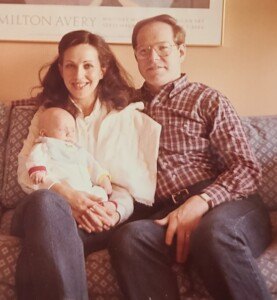
Hands down, surrogacy and egg, sperm, and embryo donation are the most successful ways that my clients become parents. What brought about this significant shift from adoption to assisted reproduction?
When I faced infertility caused by blocked fallopian tubes in 1983, adoption was virtually my only option. A British scientist had recently invented IVF—combining egg and sperm outside the body to create an embryo—as an experimental treatment to bypass the fallopian tubes. It’s hard to imagine today, but there was only one IVF program in the United States. The pioneering doctors at Eastern Virginia Medical School succeeded with the first “test tube baby” in December 1981, one of only fifteen IVF babies born anywhere in the world.
Egg donation was also in its infancy. The first baby in the United States created through egg donation was born in 1984.
The world looks astonishingly different in 2022! Superb fertility clinics abound, IVF is a routine treatment for many forms of infertility, and egg donation is a common prescription.
With over 4 million people now becoming parents via IVF in the United States each year, many have excess embryos when they have completed their families. Some are choosing to donate their unused embryos to others suffering from infertility, pregnancy loss, or transmissible genetic disorders.
Science has collided serendipitously with hard won societal changes like marriage equality and the legalizing of surrogacy in New York and New Jersey. Third-party reproduction—egg, sperm, and embryo donation, and surrogacy—is essential to burgeoning LGBTQ family creation.
When I meet with prospective adoptive parents, I also discuss surrogacy and egg, sperm, and embryo donation. Often, they pivot when they learn of the accessibility and success of third-party reproduction.
